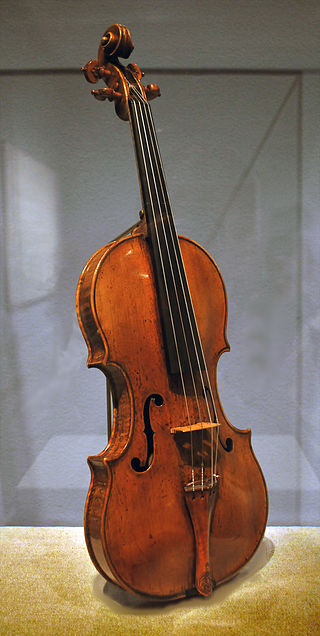
Amati is the last name of a family of Italian violin makers who lived at Cremona from about 1538 to 1740. Their importance is considered equal to those of the Bergonzi, Guarneri, and Stradivari families. Today, violins created by Nicolò Amati are valued at around $600,000. Because of their age and rarity, Amati instruments are mostly kept in a museum or private collections and are seldom played in public.
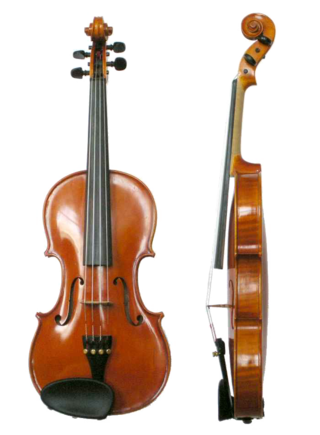
The violin, sometimes referred as a fiddle, is a wooden chordophone, and is the smallest, and thus highest-pitched instrument (soprano) in regular use in the violin family. Smaller violin-type instruments exist, including the violino piccolo and the pochette, but these are virtually unused. Most violins have a hollow wooden body, and commonly have four strings, usually tuned in perfect fifths with notes G3, D4, A4, E5, and are most commonly played by drawing a bow across the strings. The violin can also be played by plucking the strings with the fingers (pizzicato) and, in specialized cases, by striking the strings with the wooden side of the bow.

The viola ( vee-OH-lə, Italian:[ˈvjɔːla,viˈɔːla]) is a string instrument of the violin family, and is usually bowed when played. Violas are slightly larger than violins, and have a lower and deeper sound. Since the 18th century, it has been the middle or alto voice of the violin family, between the violin (which is tuned a perfect fifth higher) and the cello (which is tuned an octave lower). The strings from low to high are typically tuned to C3, G3, D4, and A4.

The viola da gamba, or viol, or informally gamba, is a bowed and fretted string instrument that is played da gamba. It is distinct from the later violin, or viola da braccio ; and it is any one of the earlier viol family of bowed, fretted, and stringed instruments with hollow wooden bodies and pegboxes where the tension on the strings can be increased or decreased to adjust the pitch of each of the strings. Although treble, tenor and bass were most commonly used, viols came in different sizes, including pardessus, treble, alto, small tenor, tenor, bass and contrabass.
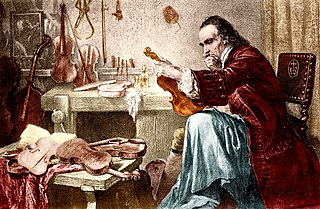
Antonio Stradivari was an Italian luthier and a craftsman of string instruments such as violins, cellos, guitars, violas and harps. The Latinized form of his surname, Stradivarius, as well as the colloquial Strad are terms often used to refer to his instruments. It is estimated that Stradivari produced 1,116 instruments, of which 960 were violins. Around 650 instruments survive, including 450 to 512 violins. His instruments are considered some of the finest ever made, and are extremely valuable collector's items.

The vertical viola, alto violin or upright viola, is a stringed instrument with the range of a viola that is played vertically in the manner of a cello. It is the fourth-highest member of the violin octet.
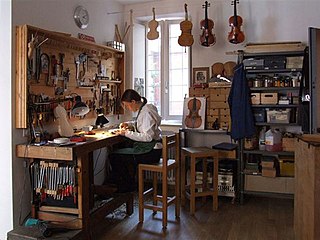
A luthier is a craftsperson who builds or repairs string instruments.
The Guarneri, often referred to in the Latinized form Guarnerius, is the family name of a group of distinguished luthiers from Cremona in Italy in the 17th and 18th centuries, whose standing is considered comparable to those of the Amati and Stradivari families.

A Baroque violin is a violin set up in the manner of the baroque period of music. The term includes original instruments which have survived unmodified since the Baroque period, as well as later instruments adjusted to the baroque setup, and modern replicas. Baroque violins have become relatively common in recent decades thanks to historically informed performance, with violinists returning to older models of instrument to achieve an authentic sound.
Jacob Stainer was the earliest and best known Austrian and Germanic luthier. His violins were sought after by famous 17th- and 18th-century musicians and composers including Johann Sebastian Bach, Wolfgang Amadeus Mozart and George Simon-Lohein. Arcangelo Corelli was one of many who played a Stainer violin.

The violin family of musical instruments was developed in Italy in the 16th century. At the time the name of this family of instruments was viole da braccio which was used to distinguish them from the viol family. The standard modern violin family consists of the violin, viola, cello, and (possibly) double bass.

The violin, viola and cello were first built in the early 16th century, in Italy. The earliest evidence for their existence is in paintings by Gaudenzio Ferrari from the 1530s, though Ferrari's instruments had only three strings. The Académie musicale, a treatise written in 1556 by Philibert Jambe de Fer, gives a clear description of the violin family much as we know it today.

Gasparo da Salò is the name given to Gasparo Bertolotti, one of the earliest violin makers and an expert double bass player. Around 80 of his instruments are known to have survived to the present day: violins, alto and tenor violas, viols, violones and double basses, violas designed with only a pair of corners, and ceteras.

The string section of an orchestra is composed of bowed instruments belonging to the violin family. It normally consists of first and second violins, violas, cellos, and double basses. It is the most numerous group in the standard orchestra. In discussions of the instrumentation of a musical work, the phrase "the strings" or "and strings" is used to indicate a string section as just defined. An orchestra consisting solely of a string section is called a string orchestra. Smaller string sections are sometimes used in jazz, pop, and rock music and in the pit orchestras of musical theatre.
A bow maker is a person who builds, repairs, and restores antique or modern bows for bowed string instruments. These include violins, violas, cellos, double basses, viola d'amore, viola da gamba, etc.
Pellegrino Micheli da Montechiaro is one of the most important figures in the early history of the violin. He was one of the first makers of the Brescian school and a contemporary of Gasparo da Salò.
Marino Capicchioni was an Italian musical instrument maker.

Andrea Postacchini was an Italian violin maker born in Fermo, known as "Stradivari of the Marches".
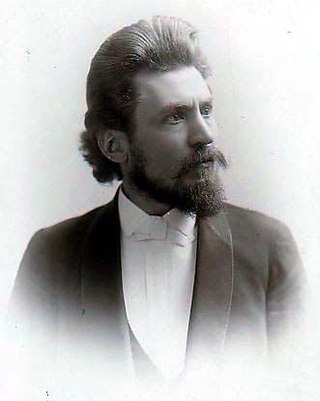
Hugo Walter Voigtlander was a German-American musician who played violin, viola, and viola d'amore. He was also an instrument maker, and a collector and arranger of viola d'amore music. As a youth he studied at the Royal Conservatory of Music in Leipzig and played violin and viola in several professional orchestras in Germany. He emigrated to the United States in 1885 where he spent ten years playing viola and viola d'amore with various professional chamber groups in and around Detroit, Michigan. He then spent two years in Pittsburgh, Pennsylvania playing in the Pittsburgh Symphony Orchestra, and in 1897 moved to New York City, where he played in a number of professional orchestras. In addition to playing viola d'amore, Walter Voigtlander taught viola d'amore, and made and collected numerous arrangements for the instrument.
Brian Lisus is a violin maker born in South Africa, who started the first violin making School in South Africa. He is currently teaching in Ojai, California, US, and owns a violin making shop there.












